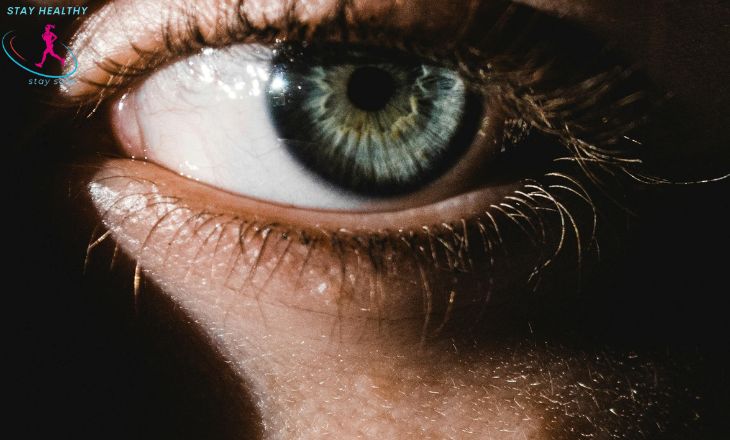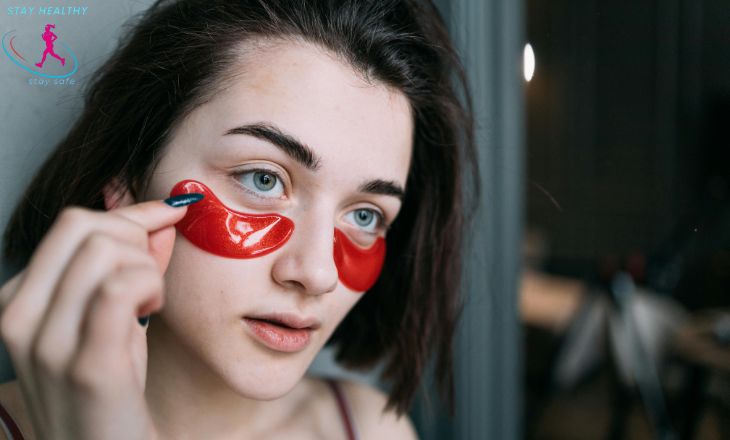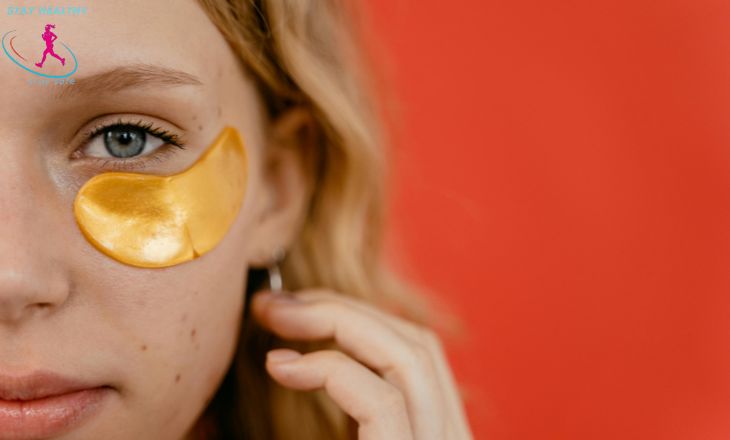Bags under the eyes are a common cosmetic concern for many people. This condition, characterized by mild swelling or puffiness under the eyes, can make you look tired and older than you are. Understanding what causes bags under eyes can help you take steps to reduce or eliminate them. While they are usually harmless and mainly a cosmetic issue, they can sometimes indicate underlying health concerns
Let’s explore the different causes of under-eye bags, along with expert opinions, to gain a deeper understanding of this condition.

Aging and Under-Eye Bags
Aging is one of the most common causes of under-eye bags. As we age, the skin around our eyes becomes thinner and loses its elasticity, making it more prone to sagging. The muscles supporting the eyelids also weaken, allowing the fat that is normally confined to the area around the eyes to move into the lower eyelids, leading to puffiness and the formation of bags under the eyes.
Dr. Anne Chapas, a dermatologist and skin care expert, explains, “As we age, the collagen and elastin fibers in our skin break down, and this degradation is particularly noticeable in the delicate skin around the eyes. The loss of these structural proteins, combined with the weakening of the underlying muscles, results in the formation of under-eye bags.” This natural aging process is a primary reason why many older adults struggle with what causes bags under eyes.
Genetics and Eye Bags
Genetics play a significant role in the development of under-eye bags. If your parents or close relatives have them, you are more likely to develop them as well. The hereditary factor determines how your skin ages and how fat is distributed under your skin, particularly around the eyes. Some people are genetically predisposed to having thinner skin or more fat in this area, making them more susceptible to developing bags under the eyes.
Dr. Doris Day, a board-certified dermatologist, states, “Genetics can influence the structure and appearance of the skin around your eyes. If your family has a history of under-eye bags, there’s a good chance that you will experience them too, regardless of your lifestyle or skincare routine.” Understanding what causes bags under eyes often involves looking at your family’s history.
Sleep and Eye Bags
Lack of sleep is another well-known cause of under-eye bags. When you don’t get enough sleep, your body releases more cortisol, a stress hormone that breaks down the skin’s collagen, leading to thinning skin and the formation of bags under the eyes. Furthermore, inadequate sleep can lead to fluid retention in the lower eyelids, causing them to appear puffy.
Dr. Michael Breus, a clinical psychologist and sleep specialist, mentions, “Sleep deprivation can have a significant impact on your skin, especially around your eyes. The accumulation of fluid and the increase in cortisol levels can make under-eye bags more pronounced.” Ensuring adequate and restful sleep is a crucial factor in addressing what causes bags under eyes.
Gravitational Pull and Weakened Support
As we age, the delicate tissues and fat pads around the eyes can shift downward due to the effects of gravity. “The natural support structures that hold these tissues in place weaken over time, allowing the fat to protrude and create the appearance of under-eye bags,” explains Dr. David Lee, a plastic surgeon at the University of Southern California. This gradual loss of structural support is a key contributor to the development of bags under the eyes, as demonstrated in a study published in the Aesthetic Surgery Journal.
Allergies and Under-Eye Puffiness
Allergies can also contribute to the development of under-eye bags. When you experience an allergic reaction, your body releases histamines, which can cause inflammation and swelling in the tissues around your eyes. This leads to puffy eyes and the formation of under-eye bags. Rubbing or scratching your eyes due to itchiness can exacerbate the puffiness and make the bags under your eyes more noticeable.
Dr. Stanley Fineman, an allergist and immunologist, explains, “Allergic reactions often cause the blood vessels under the eyes to dilate, leading to swelling and puffiness. This inflammation is a common reason for the appearance of under-eye bags in individuals with allergies.” Understanding what causes bags under eyes requires recognizing the role that allergies can play.
Fluid Retention Under Eyes
Fluid retention is another common cause of under-eye bags. When the body retains excess fluid, it often accumulates in the lower eyelids, leading to swelling and puffiness. This can be caused by various factors, including high salt intake, dehydration, hormonal changes, or certain medications. Fluid retention is particularly noticeable in the morning because fluids can settle in the tissues around your eyes while you sleep.
Dr. Howard Sobel, a dermatologist and founder of Sobel Skin, notes, “Fluid retention can cause noticeable puffiness around the eyes, especially in the morning. It’s important to stay hydrated, reduce salt intake, and be mindful of your sleeping position to minimize fluid accumulation in this area.” Addressing what causes bags under eyes often involves managing fluid retention.
Lifestyle and Eye Bags
Your lifestyle choices can significantly impact the appearance of your skin, including the development of under-eye bags. Factors such as smoking, excessive alcohol consumption, poor diet, and stress can contribute to the formation of bags under the eyes. Smoking, for example, reduces blood flow to the skin, causing it to age prematurely and lose elasticity. Alcohol can dehydrate the skin, leading to puffiness and under-eye bags.
Dr. Joshua Zeichner, a dermatologist and director of cosmetic and clinical research in dermatology at Mount Sinai Hospital, states, “Lifestyle factors such as smoking, drinking alcohol, and a poor diet can accelerate the aging process and contribute to the development of under-eye bags. Making healthier choices can help improve the appearance of your skin.” Understanding what causes bags under eyes often involves assessing and adjusting your lifestyle habits.
Eye Bags Due to Stress
Chronic stress can also lead to the formation of under-eye bags. Stress triggers the release of cortisol, which can break down the collagen in your skin and lead to sagging. Stress can cause changes in your sleep patterns and lead to fluid retention, both of which contribute to the formation of under-eye bags.
Dr. Eva Selhub, a physician and stress management expert, explains, “Stress has a profound effect on your skin, especially around the eyes. It can lead to inflammation, fluid retention, and the breakdown of collagen, all of which contribute to the appearance of under-eye bags.” Addressing what causes bags under eyes may require managing stress levels.
Skincare for Puffy Eyes
A proper skincare routine can help reduce the appearance of under-eye bags. Using eye creams that contain ingredients such as caffeine, retinol, and hyaluronic acid can help tighten the skin, reduce puffiness, and improve the appearance of under-eye bags. Caffeine, for example, has vasoconstrictive properties, which means it can help reduce swelling by constricting blood vessels.
Dr. Jessica Wu, a dermatologist and author, mentions, “Incorporating the right eye cream into your skincare routine can make a noticeable difference in the appearance of under-eye bags. Look for products that contain caffeine, retinol, and hyaluronic acid to help tighten the skin and reduce puffiness.” Understanding what causes bags under eyes involves using the right skincare products.

How to Prevent Bags Under the Eyes
Preventing what causes bags under eyes involves a combination of lifestyle changes, skincare routines, and healthy habits. Here are several strategies to help reduce and prevent under-eye puffiness:
Get Enough Sleep
Lack of sleep is a common cause of what causes bags under eyes. When you don’t get enough rest, the skin around your eyes can become more prone to swelling and dark circles. The American Academy of Sleep Medicine suggests aiming for 7-9 hours of quality sleep per night. Establishing a consistent sleep schedule and creating a relaxing bedtime routine can help improve sleep quality.
Stay Hydrated
Dehydration can lead to puffiness and swelling around the eyes. Drinking plenty of water throughout the day helps maintain skin elasticity and reduces fluid retention. According to Dr. Joshua Zeichner, a dermatologist, “Hydration is crucial for maintaining the skin’s natural moisture balance and minimizing the appearance of bags under the eyes.”
Reduce Salt Intake
High salt consumption can cause the body to retain water, leading to puffiness around the eyes. Reducing your intake of salty foods and processed snacks can help prevent fluid buildup. The American Heart Association recommends limiting sodium intake to less than 2,300 milligrams per day, with an ideal limit of 1,500 milligrams for most adults.
Use Eye Creams and Gels
Applying eye creams or gels that contain ingredients like caffeine, hyaluronic acid, or peptides can help reduce the appearance of bags under the eyes. Caffeine, for example, constricts blood vessels and reduces puffiness. Dr. Hadley King, a dermatologist, notes, “Eye creams with caffeine can temporarily reduce the appearance of under-eye bags by improving circulation and reducing swelling.”
Protect Your Skin from the Sun
Sun exposure can damage the skin and exacerbate the appearance of bags under the eyes. Wearing sunglasses and applying sunscreen around the eyes can protect the delicate skin from UV damage. The Skin Cancer Foundation advises using a broad-spectrum sunscreen with an SPF of at least 30 to shield your skin from harmful UV rays.
Manage Allergies
Allergies can contribute to under-eye puffiness and bags. Identifying and managing allergens can help reduce symptoms. According to the American College of Allergy, Asthma, and Immunology, using antihistamines or avoiding known allergens can alleviate allergy-related puffiness.
Limit Alcohol Consumption
Alcohol can dehydrate the body and lead to swelling and puffiness. Limiting alcohol intake and drinking water to stay hydrated can help minimize under-eye bags. The National Institute on Alcohol Abuse and Alcoholism recommends moderation, defining it as up to one drink per day for women and two drinks per day for men.
Elevate Your Head While Sleeping
Sleeping with your head slightly elevated can prevent fluid from accumulating under your eyes overnight. Using an extra pillow or a wedge pillow can help keep your head elevated and reduce morning puffiness.

Conclusion
In conclusion, the causes of bags under the eyes are multifaceted, ranging from the natural effects of aging to lifestyle factors and genetic predisposition. By understanding the diverse underlying factors that contribute to this common cosmetic concern, individuals can take proactive steps to address and potentially reduce the appearance of what causes bags under eyes. Whether through lifestyle modifications, skincare interventions, or medical treatments, there are various strategies available to help manage and minimize the visibility of under-eye bags.
FAQs
What causes bags under the eyes?
The primary causes of bags under the eyes include aging and loss of skin elasticity, fluid retention and swelling, gravitational pull and weakened support structures, lifestyle factors (such as poor sleep and excessive salt intake), and genetic predisposition.
What can cause dark bags under the eyes?
Dark bags under the eyes can be caused by a variety of factors, including aging, genetics, allergies, fatigue, and dehydration. These factors can lead to increased pigmentation, blood vessel visibility, and fluid accumulation, resulting in the appearance of dark under-eye circles.
What causes puffy bags under the eyes?
Puffy bags under the eyes are often caused by fluid retention, which can be triggered by factors such as allergies, hormonal changes, lack of sleep, and certain medical conditions. The buildup of fluid in the delicate skin around the eyes can lead to a swollen, puffy appearance.
What drugs can cause bags under the eyes?
Certain medications, such as corticosteroids, antihistamines, and some blood pressure drugs, can cause fluid retention and contribute to the development of bags under the eyes. It’s important to discuss any potential side effects with your healthcare provider.
What causes bags under the eyes in men?
The same factors that cause bags under the eyes in women, such as aging, fluid retention, and genetics, can also affect men. Some men may be more prone to under-eye bags due to their facial anatomy and the distribution of fat and muscle in the eye area.
